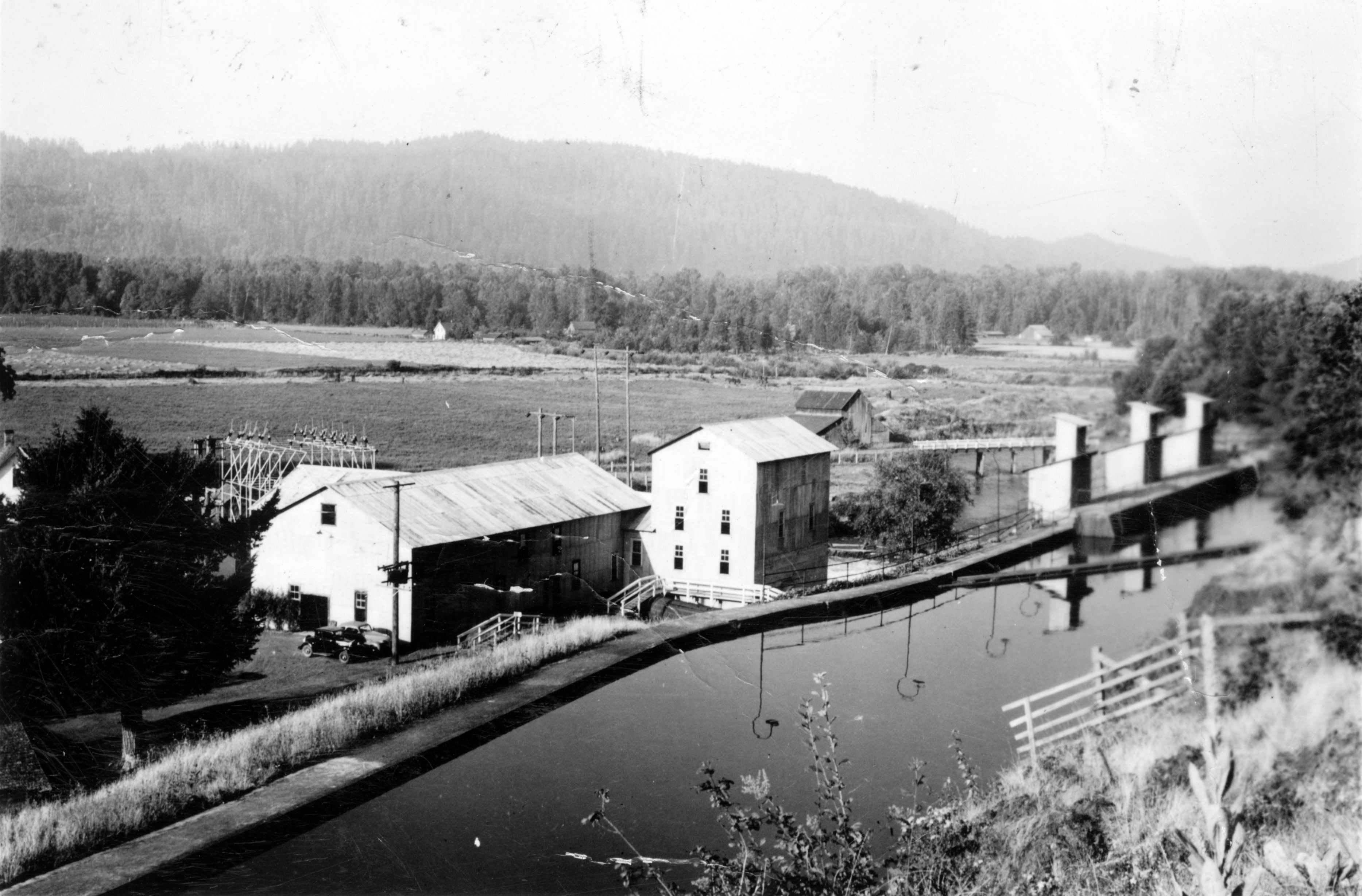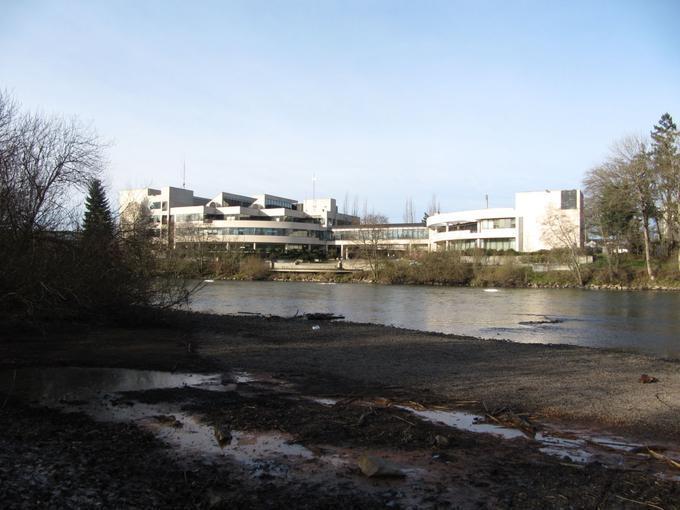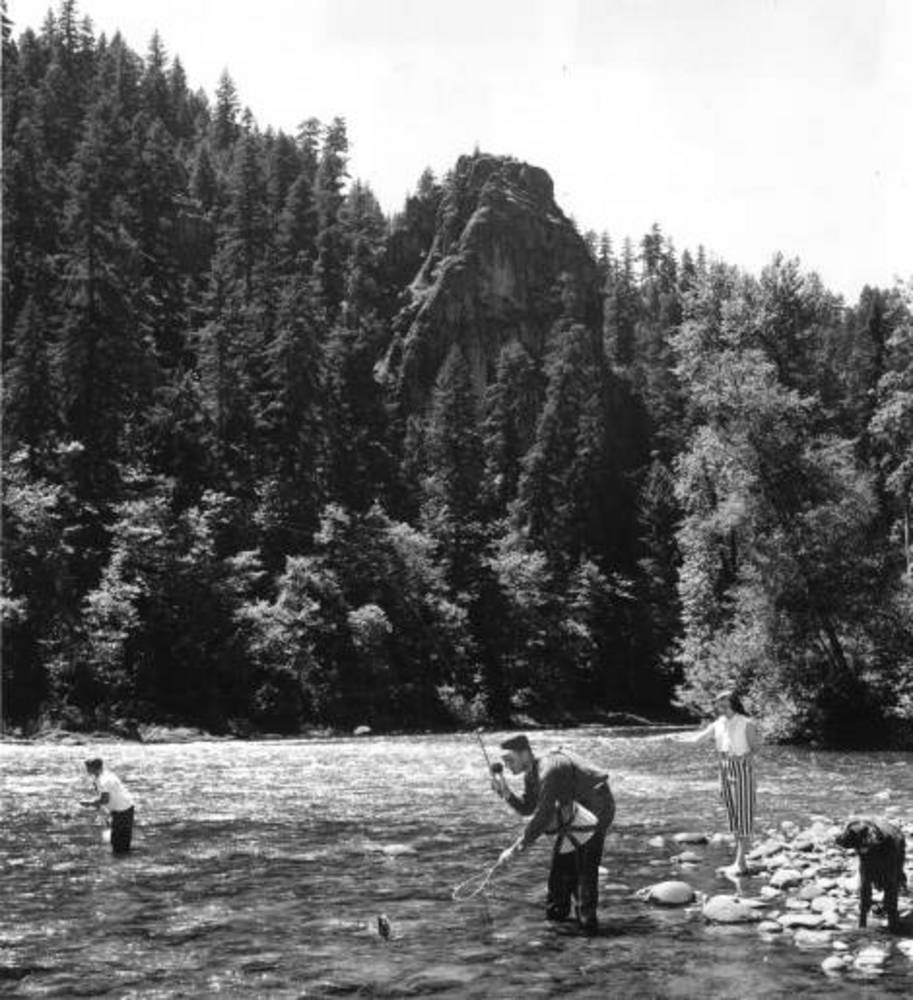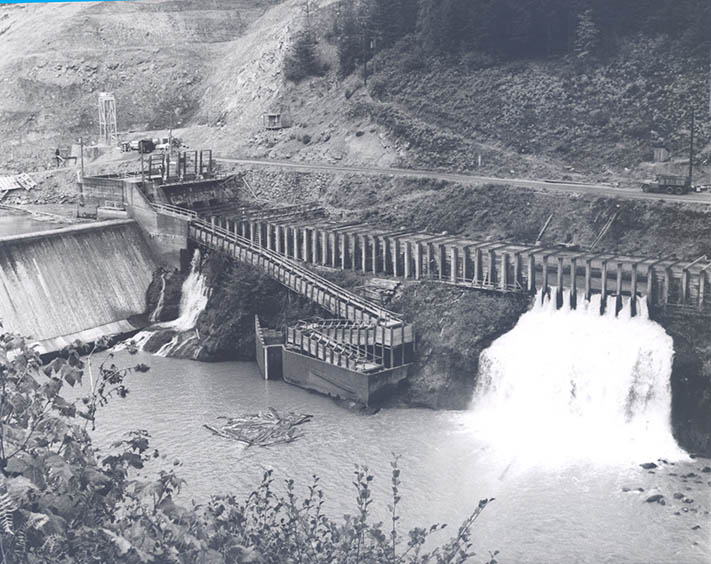The Walterville Canal and Powerhouse is owned and operated by the Eugene Water and Electric Board. Completed in 1911, the powerhouse is in Walterville, east of Springfield. The Walterville Powerhouse produces nine megawatts of electricity, about enough to power nine thousand homes.
In 1910, Eugene voters approved a bond measure to fund the construction of a powerhouse at Walterville to generate power for the pumps of the city's new municipal water utility. The powerhouse was built at the end of the four-mile-long Walterville Canal, which carries diverted water from the main stem of the McKenzie River to the powerhouse on Camp Creek Road, northwest of Walterville.
The Walterville Canal was dug almost entirely by hand, with men and horses moving dirt and rock. It was reported that "[b]y the spring of 1910, 55 teams of horse, drawing heavily upon local farms for livestock, were at work in the canal." Horse-drawn scapers and men with shovels moved soil and rock to cut the canal, and the heavy machinery had to be hauled up rough roads from Springfield, the nearest rail siding. New bridges were built across the canal, which was not lined until 1924, and the construction route from Springfield would later become the basis for the McKenzie River Highway.
Walterville was enlarged to increase its generation capacity in 1934. In 1949, Cornell, Howland, Hayes, and Merrifield (CH2M) did a major redesign of the powerhouse, including the nearly complete replacement of the building. Output increased to 11,000 horsepower. The plant was most recently updated in 2002.
-
![]()
Walterville Plant forebay, 7/24/1941.
Courtesy Eugene Water & Electric Board Archives -
![]()
Walterville Canal, looking west from Lester Milliken Bridge, 1/25/1925.
Courtesy Eugene Water & Electric Board Archives -
![]()
The powerhouse at at night, 1963.
Courtesy Eugene Water & Electric Board Archives -
Walterville plant.
Courtesy George Kramer, P2150011
Related Entries
-
![Eugene]()
Eugene
Eugene is a metropolitan center at the head of the Willamette Valley, a…
-
![Eugene Water & Electric Board (EWEB)]()
Eugene Water & Electric Board (EWEB)
In the aftermath of a 1906 outbreak of typhoid fever in Eugene, which w…
-
![McKenzie River]()
McKenzie River
The McKenzie River, on the western slope of the Cascade Range, starts o…
-
![Portland Railway Light and Power]()
Portland Railway Light and Power
Portland Railway Light & Power (PRLP) was created in 1906 through the c…
Map This on the Oregon History WayFinder
The Oregon History Wayfinder is an interactive map that identifies significant places, people, and events in Oregon history.
Further Reading
Cornell, Howland, Hayes & Merryfield. Contract Documents for the Construction of the Powerhouse Section for Unit NO. 4, Walterville Hydroelectric Development (for EWEB), 1949 (EWEB Library).
Kramer, George. EWEB/Leaburg-Walterville Hydroelectric Project: Walterville Powerhouse Complex, Section 106 Documentation Form. Heritage Research Associates, Inc., prepared for EWEB, May 2004.
Stone, Norman F. Bountiful McKenzie: The Story of the Eugene Water and Electric Board. Eugene, Ore.: Parkstone Company, 1986.
Toepel, Kathryn Anne, and Stephen Dow Beckham. Cultural Resource Investigations for the Eugene Water and Electric Board Re-licensing Project, Lane County, Oregon. (Eugene, Ore.: Heritage Research Associates Report NO. 102), 1991.








